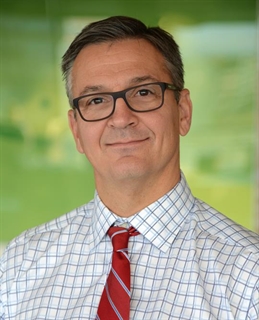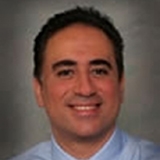Perspectives:
First-In-Human Cellular Therapy Trials and Deep-Water Exploration: Navigating Risks and Advancing Humanity
By Michael Verneris, MD

The tragedy surrounding the Titan submersible expedition, which aimed to take individuals to explore the depths of the Titanic wreckage but resulted in the loss of five lives, captivated the world's attention. These events prompted me to reflect on the parallels between deep-water exploration and Phase I cellular therapy clinical trials for refractory cancer treatment, two very high-risk ventures. While the investigation into the Titan submersible failure is ongoing, both types of endeavors require significant financial support, justification, comprehensive oversight, disclosure of risks, safety assessment, risk mitigation planning, and consideration of the consequences when things go wrong. Although deep-sea exploration and clinical trials differ in many respects, probing these shared considerations might provide valuable insights.
As most know, the primary goal of Phase I cellular therapy trials is to establish the safety profile of a novel treatment in humans. However, as a clinician-researcher, I often find myself impatiently yearning for immediate efficacy results, even before safety is established. This has been further compounded by the success we have witnessed with CD19-, CD22-, and BCMA-directed CAR-T cells, perhaps leading some to have unreasonable expectations of subsequent studies in our field. Phase I trials are the key first step in a long process, laying the foundation for subsequent phases to determine both safety and efficacy. Evaluating the risk profile of a cellular therapy is especially challenging due to the limitations of murine data as a surrogate for human experiences. Animal models offer valuable preliminary insights, but the transition to human trials introduces uncertainties and risks that must be carefully evaluated.
The intricacies of clinical trials, such as starting with (a seemingly) subtherapeutic dose, dose escalation, 3 x 3 clinical trial designs, staggered enrollment, and the use of surrogate endpoints, are standard and essentially mandated both by our culture and the regulatory bodies that seek to assure patient safety, such as IRBs, Data and Safety Monitoring Boards, FDA, etc. Drawing parallels between the Titan submersible and Phase I trials reminds me of the necessity for these safeguards, at least for our discipline. While some of these may seem overly cautious, each is crucial for protecting the well-being of trial participants and ensuring an accurate assessment of the therapy's effects, particularly in rare diseases with limited patient populations.
One of the exciting and most gratifying aspects of my role as a physician-scientist is the potential to advance medicine by pushing the boundaries of what is possible. These endeavors require collaborative efforts from research staff, nurses, physicians, pharmaceutical production facilities, pharmaceutical companies, and most importantly the courageous patients who put themselves at risk to contribute to scientific progress all for a chance to live. Progress often comes with inherent risks. Thus, careful planning, a conservative approach, and ongoing risk mitigation are paramount.
The recent events surrounding the Titan submersible expedition underscore, for me, the shared challenges and responsibilities involved in exploring uncharted territory. Both deep-water exploration and cellular therapy trials require not only significant planning but also great respect for the process and the individuals alike. While the specifics may differ, the underlying principles of risk mitigation and prioritizing safety are aligned. These endeavors could reshape our understanding of the world—whether through deep-sea exploration or cancer research. Both have the potential to transform lives.
Chronic Leukemia Working Committee
Current Committee Leadership
| Co-Chairs |
 |
 |
 |
Betul Oran,
MD Anderson Cancer Center, Houston, TX
|
Mark Juckett,
University of Minnesota Blood and Marrow Transplant Program – Adults, Minneapolis, MN |
Ryotaro Nakamura,
City of Hope,
Duarte, CA
|
| |
|
|
| Scientific Director |
Statistical Director |
Statistician |
 |
 |
 |
Wael Saber,
CIBMTR MCW,
Milwaukee, WI |
Soyoung Kim,
CIBMTR MCW,
Milwaukee, WI |
Jakob DeVos,
CIBMTR MCW,
Milwaukee, WI |
The main goal of the Chronic Leukemia Working Committee is to help establish the optimal timing of HCT for patients with MDS, CML, CLL, and MPN, as well as to improve HCT outcomes for such patients. As HCT is increasingly offered to older adults, many patients with CML and / or CLL disease are considered for HCT. During the last several years, the committee's efforts resulted in several published manuscripts and both oral and poster presentations. The committee recently revised the MDS data collection forms to capture better molecular and disease-specific data of prognostic importance. We also created a new separate series of forms for MPN disorders. These forms now incorporate more recent novel therapies, which will help generate important future studies for the committee.
To help foster new study proposals, our committee provides members with disease-specific lists of accepted studies and prior proposals that were not accepted, with the rationale for the decision. This information allows investigators to better focus new study proposals on feasible and not redundant concepts. A few of the recently published studies are described below.
CK17-01, PMID: 37134306
Dr. Roni Tamari and the Chronic Leukemia Working Committee examined 623 patients who underwent HCT between 2000-2016 in the US (CIBMTR cohort) to develop a prognostic model for patients undergoing allogeneic HCT (alloHCT) for myelofibrosis. A Cox multivariable model was used to identify factors prognostic of mortality. A weighted score using these factors was assigned to patients who underwent HCT in Europe (EBMT cohort, n=623). Age older than 50 (hazard ratio [HR], 1.39; 95% confidence interval [CI], 0.98-1.96), and HLA-matched unrelated donor (HR, 1.29; 95% CI, 0.98-1.7) were associated with an increased hazard of death and were assigned 1 point. Hemoglobin lower than 100 g/L at the time of transplant (HR, 1.63; 95% CI, 1.2-2.19), and a MMUD (HR, 1.78; 95% CI, 1.25-2.52) were assigned 2 points. The 3-year overall survival in patients with a low (1-2 points), intermediate (3-4 points), and high score (5 points) were 69% (95% CI, 61-76%), 51% (95% CI, 46-56.4%), and 34% (95% CI, 21-49%), respectively (P < 0.001). Thus, the proposed system was prognostic of survival in two large cohorts, CIBMTR and EBMT, and can easily be applied by clinicians consulted by patients with myelofibrosis about transplant outcomes.
CK20-01, PMID: 36779595
The optimal conditioning regimen, RIC, or MAC, is not well known for patients with myelofibrosis undergoing alloHCT. In a study led by Dr. Guru Subramanian Guru Murthy, the Chronic Leukemia Working Committee analyzed the outcomes in RIC and MAC cohorts based on the conditioning regimens used. Among 872 eligible patients, 493 underwent alloHCT using RIC (fludarabine / busulfan = 166, fludarabine / melphalan = 327) and 379 using MAC (fludarabine / busulfan = 247, busulfan / cyclophosphamide = 132). In multivariable analysis with RIC, fludarabine / melphalan was associated with inferior overall survival (HR 1.80, 95% CI 1.15-2.81, P=0.009); higher early non-relapse mortality (HR 1.81, 95% CI 1.12-2.91, P=0.01); and higher acute GVHD (grade II-IV- HR 1.45, 95% CI 1.03-2.03, P=0.03; grade III-IV HR 2.21, 95% CI 1.28-3.83, P=0.004) compared to fludarabine / busulfan. In the MAC setting, busulfan / cyclophosphamide was associated with a higher acute GVHD (grade II-IV HR 2.33, 95% CI 1.67-3.25, P<0.001; grade III-IV HR 2.31, 95% CI 1.52-3.52, P<0.001) and inferior GVHD-free relapse-free survival (HR 1.94, 95% CI 1.49-2.53, P<0.001) as compared to fludarabine / busulfan. Hence, the study suggests that fludarabine / busulfan is associated with better outcomes in RIC and MAC.
CK16-01, PMID: 35969835
The frequency of pathogenic / likely pathogenic germline variants in patients with MDS diagnosed at age 40 years or younger is 15-20%. However, no comprehensive studies assess the frequency of such variants across the age spectrum. In collaboration with the Chronic Leukemia Working Committee, Dr. Simone Feurstein and colleagues performed augmented whole-exome sequencing of peripheral blood samples from 404 patients with MDS and their related donors before alloHCT. Single-nucleotide and copy number variants in 233 genes were analyzed and interpreted. Germline status was defined as a variant found in the patient and related donor, or if found only in germline alleles. The study team identified pathogenic / likely pathogenic germline variants in 28 of 404 patients with MDS (7%), present within all age deciles. Patients with pathogenic / likely pathogenic variants were more likely to develop higher-grade MDS than those without (43% vs 25%; P = .04). Pathogenic / likely pathogenic variants in bone marrow failure syndrome genes were found in 5 patients aged less than 40 years. In contrast, variants in DDX41 (n = 4), telomere biology disorder genes (n = 2), and general tumor predisposition genes (n = 17) were found in patients aged older than 40 years. If presumed germline variants were included, the yield of pathogenic / likely pathogenic variants would increase to 11%, and by adding suspicious variants of unknown significance, it would rise further to 12%. The high frequency of pathogenic / likely pathogenic germline variants in this study supports comprehensive germline genetic testing for all patients with MDS regardless of their age at diagnosis.
CK19-01b, PMID: 35658101
Chronic neutrophilic leukemia is a rare, aggressive Philadelphia (Ph)-negative MPN. Dr. Bhagirathbhai Dholaria led a collaborative effort to collect transplant data from CIBMTR and the EBMT and identified a total of 29 adult patients who underwent their first alloHCT during 2000-2018. The use of hydroxyurea was reported in 19 (66%) patients. Other reported pre-transplant therapies included hypomethylating agents (n = 4), tyrosine kinase inhibitor (n = 7), and ruxolitinib (n = 7). The non-relapse mortality was 10.3% (95% CI 2-24.1)] at one year and 13.8% (95% CI 3.7-28.9) at four years after alloHCT. Most relapses were seen within one year of alloHCT, with one- and four-year relapse incidence being 31% (95% CI 15.5-49.2) and 34.5% (95% CI 18.2-52.9), respectively. AlloHCT resulted in disease-free survival of 58.6% (95% CI: 40.5-75.6) at one year and 51.7% (95% CI: 33.8-69.4) at four years after alloHCT, respectively. The overall survival was 69% (95% CI: 51.3-84.2) at one year and 55.2% (95% CI 37.1-72.5) at four years, respectively. This study, the largest case series reported to date, demonstrated that alloHCT is feasible for patients with chronic neutrophilic leukemia and may lead to long-term survival.
CK-18-02, PMID: 35443559
Somatic mutations are recognized as an important prognostic factor in chronic myelomonocytic leukemia. However, limited data are available regarding their impact on outcomes after HCT. In a study led by Dr. Matt Mei and colleagues, the Chronic Leukemia Working Committee evaluated 313 patients with chronic myelomonocytic leukemia who underwent alloHCT and had an available biospecimen for mutation analysis. When the molecularly informed CMML-specific prognostic scoring system (CPSS-Mol) prognostic model was applied, a high CPSS-Mol score (HR=2, P=0.0079) correlated significantly with overall survival. The most common somatic mutations were in ASXL1 (62%), TET2 (35%), KRAS/NRAS (33% combined), and SRSF2 (31%). DNMT3A and TP53 mutations were associated with decreased overall survival (HR=1.70, 95% CI 1.11-2.60, P=0.0147; HR=2.72, 95% CI 1.37-5.39, P=0.0042, respectively) while DNMT3A, JAK2, and TP53 mutations were associated with decreased disease-free survival (HR=1.66, 95% CI 1.11-2.49, P=0.0138; HR=1.79, 95% CI 1.06-3.03, P=0.0293; and HR=2.94, 95% CI 1.50-5.79, P=0.0018, respectively). The only mutation associated with increased relapse was TP53 (HR=2.94, P=0.0201). The goodness of fit measured by Harrell’s C-index for the CPSS and CPSS-Mol were very similar. These registry data determined the mutational landscape in patients with chronic myelomonocytic leukemia who underwent alloHCT and demonstrated an association between CPSS-Mol and transplant outcomes, although without major improvement in the risk prediction beyond that provided by the CPSS.
CK21-R1, PMID: 35338251
In this commentary, the team of experts from the Chronic Leukemia Working Committee discussed several questions posed by the late CML expert Prof. Michele Baccarani. The group suggests that transplants should be more often considered when counseling people with chronic phase CML unlikely to achieve therapy-free survival with tyrosine kinase inhibitor therapy and question whether we are discounting HCT as a possible important intervention.
CK19-01a, PMID: 35081472
T cell prolymphocytic leukemia (T-PLL) is a rare, aggressive malignancy with limited treatment options and poor long-term survival. Previous studies of alloHCT for T-PLL are limited by small numbers, and descriptions of patient and transplantation characteristics and outcomes after alloHCT are sparse. Dr. Hemant S. Murthy led a study from the Chronic Leukemia Working Committee analyzing the database on 266 patients with T-PLL who underwent alloHCT during 2000-2018. The 4-year rates of overall survival, disease-free survival, relapse, and treatment-related mortality were 30.0% (95% CI 23.8-36.5%), 25.7% (95% CI 20-32%), 41.9% (95% CI 35.5-48.4%), and 32.4% (95% CI 26.4-38.6%), respectively. In multivariable analyses, 3 variables were associated with inferior overall survival: Receipt of a MAC regimen (HR=2.18, P<0.0001); age >60 years (HR=1.61, P=0.0053); and suboptimal performance status, defined by Karnofsky Performance Status (KPS) <90 (HR=1.53, P=0.0073). The study data showed that RIC without in vivo TCD (i.e., without antithymocyte globulin or alemtuzumab) before alloHCT was associated with long-term disease-free survival in patients with T-PLL who were aged ≤60 years or who had a KPS >90 or chemosensitive disease.
CK18-03, PMID: 35024768
There is evidence that the donor's age is an important factor for HCT outcomes. However, whether older HLA-matched sibling donors or younger matched unrelated donors are associated with better outcomes remains unclear. Dr. Guru Subramanian Guru Murthy and the Chronic Leukemia Working Committee assessed data reported to CIBMTR about 1,761 adults ≥50 years with MDS who underwent HCT using an older matched sibling donor or younger matched unrelated donor during January 1, 2011, to December 31, 2017. Of 1,761 patients (1,162 [66%] male; median age [range] , 64.9 [50.2-77.6] years in the matched sibling donor cohort, and 66.5 [50.4-80.9] years in matched unrelated donor cohort), 646 underwent alloHCT with an older matched sibling donor and 1,115 with a younger matched unrelated donor. In multivariable analysis, the rate of disease-free survival was significantly lower in alloHCTs with older matched sibling donors compared to younger matched unrelated donors (HR=1.17, 95% CI 1.02-1.34, P=0.02), whereas the difference in the overall survival rate of alloHCT with younger matched unrelated donors versus older matched sibling donors was not statistically significant (HR=1.13, 95% CI 0.98-1.29, P=0.07). AlloHCT with older matched sibling donors was associated with significantly higher relapse (HR=1.62, 95% CI 1.32-1.97, P<0.001); lower non-relapse mortality (HR=0.76, 95% CI 0.59-0.96, P=0.02); lower acute GVHD (HR=0.52, 95% CI 0.42-0.65, P<0.001); chronic GVHD (HR=0.77, 95% CI 0.64-0.92, P=0.005); and a lower rate of GVHD-free relapse-free survival beyond 12 months after alloHCT (HR=1.42, 95% CI 1.02-1.98, P=0.04). This cohort study found higher rates of disease-free survival and lower relapse for alloHCT in MDS using younger matched unrelated donors compared to older matched sibling donors. The risk of non-relapse mortality and GVHD was lower with older matched sibling donors.
CK21-01 (2023 Tandem Meetings abstract)
While haploidentical donor HCT with post-transplant cyclophosphamide (PT-Cy) is emerging, a comparison of outcomes with the four common donor types remains unknown. Dr. Tania Jain and the Chronic Leukemia Working Committee evaluated 1,057 patients and demonstrated 3-year overall survival estimate for haploidentical donor, matched sibling donor, matched unrelated donor, and MMUD was 58%, 68.3%, 61.5%, 57.9%; disease-free survival was 28.2%, 31.3%, 27.3%, 28.6%; relapse was 44.4%, 51.6%, 48.1%, 43.6%; and non-relapse mortality was 27.4%, 17.1%, 24.6%, 27.8%, respectively. On multivariate analysis, with adjustment for patient, disease, and BMT-related co-variates, overall survival at 3 months from BMT was superior with a matched sibling donor versus haploidentical donor with PT-Cy (HR=0.22, 95% CI 0.10-0.46, P<0.0001); vs matched unrelated donor (HR=0.30, 95% CI 0.17-0.53, P<0.0001); vs MMUD (HR=0.28, 95% CI 0.09-0.93, P=0.04), mostly due to lower non-relapse mortality with a matched sibling donor. While a matched sibling donor is the preferred donor in patients with myelofibrosis, for those lacking a matched sibling donor, utilizing a haploidentical donor with PT-Cy is a comparable alternative option to unrelated donors for HCT in myelofibrosis.
The Chronic Leukemia Working Committee has many ongoing studies. For MDS, our studies include:
- The impact of somatic mutations on outcomes after HCT in patients with MDS-RS and MDS/MPN-RS-T (CK22-01),
- Toxicity and survival of AML/MDS patients receiving HCT using reduced-intensity conditioning: A propensity score analysis (CK22-02),
- Identifying the optimal GVHD regimen in HCT for myelofibrosis (CK23-01),
- Evaluation of the mutational landscape in MDS arising from aplastic anemia and its impact on transplant outcomes (CK23-02).
The committee welcomes new participants and new proposals. We also encourage collaboration with other committees and the use of outside data sets, which can better define the role and timing of transplantation as new non-transplant strategies emerge. We encourage young investigators to take part in the committee, which will provide them with an excellent opportunity to become familiar with novel study designs for observational research and the statistical methodologies utilized. The next in-person meeting of the Chronic Leukemia Working Committee is at the Tandem Meetings in San Antonio, Texas, in February 2024. We look forward to seeing you there and welcoming new proposals.
View planned, in-progress, and completed studies and publications on the Chronic Leukemia Working Committee webpage.
Grant Conclusion for Cellular Immunotherapy Data Resource
By Carlos Litovich
We are excited to bring you significant updates about the CIDR. After years of groundbreaking research and transformative contributions to the immunotherapy field, we have reached a crucial milestone. The grant supporting this innovative project is now coming to an end. In this article, we reflect on the program's achievements and express our gratitude to all those involved.
Over the past several years, the CIDR has revolutionized the landscape of cellular immunotherapy research. The initiative aimed to accelerate the development of new therapies by creating a comprehensive data resource that combines state-of-the-art technology with extensive clinical data. The Moonshot Initiative’s IOTN aimed to reach a decade’s worth of scientific advancement within 5 years. CIDR has contributed to this overarching goal. This was achieved through the development and maintenance of the outcomes database and the expansion of CIBMTR infrastructure through efficient processes for publishing and accessing data resources and statistical support.
During its tenure, the program accomplished several key objectives. First, it supported the expansion of cellular therapy data collection. This rich data repository now provides researchers with an invaluable resource to investigate the complex scenarios of cellular therapy outcomes.
Additionally, the CIDR fostered collaboration between multidisciplinary teams of scientists, clinicians, and data experts. This interdisciplinary approach facilitated the exchange of knowledge, enabling breakthrough discoveries and novel therapeutic strategies. The program's collaborative spirit has undoubtedly played a pivotal role in advancing the cellular immunotherapy field.
We must express our heartfelt appreciation to all the individuals and organizations who have contributed to the success of the CIDR. Their unwavering dedication, expertise, and commitment to advancing cellular immunotherapy have been instrumental. This includes the brilliant researchers, tireless support staff, and visionary leaders who have championed this initiative from its inception.
As the grant supporting the CIDR concludes, it is important to recognize that this milestone is not an endpoint, but a steppingstone towards a future full of possibilities. The knowledge and insight gained through this program lay the groundwork for further advancements in immunotherapy and pave the way for novel treatment modalities. Initiatives started with this program will now be funded through the broader U24 grant, A Data Resource for Blood and Marrow Transplant and Adoptive Cellular Therapy Research.
The CIDR has reached a momentous conclusion, and its initiative will continue within the adoptive cell therapy portfolio of CIBMTR, impacting the scientific and medical communities for years to come. We extend our deepest gratitude to everyone who has been part of this remarkable journey.
As we bid farewell to this phase of the program, we eagerly anticipate the next wave of innovative projects that will build upon these accomplishments. The future holds immense promise for further breakthroughs in cellular immunotherapy, benefiting patients around the world.
Thank you for being part of our community and supporting us on this remarkable journey.
Our Supporters
CIBMTR is supported primarily by Public Health Service U24CA076518 from the National Cancer Institute (NCI), the National Heart, Lung and Blood Institute (NHLBI), and the National Institute of Allergy and Infectious Diseases (NIAID); U24HL138660 and U24HL157560 from NHLBI and NCI; U24CA233032 from the NCI; OT3HL147741 from the NHLBI; HHSH250201700006C, 75R60222C00008, 75R60222C00009 and 75R60222C00011 from the Health Resources and Services Administration (HRSA); andN00014-21-1-2954 and N00014-23-1-2057 from the Office of Naval Research.
Additional federal support is provided by P01CA111412, R01CA100019, R01CA218285, R01CA231141, R01CA231838, R01CA262899, R01AI128775, R01AI150999, R01AI158861, R01HL155741, UM1CA121947, U01AI069197, U01AI126612, U01H L128568, UG1HL069254.
Support is also provided by Be The Match Foundation; Boston Children’s Hospital; Dana Farber; Fred Hutchinson Cancer Center; Gateway for Cancer Research, Inc.; Jeff Gordon Children’s Foundation; PBMTF; Stanford University; Medical College of Wisconsin; National Marrow Donor Program; University of Pittsburgh; and from the following commercial entities: AbbVie; Actinium Pharmaceuticals, Inc.; Adaptimmune; Adaptive Biotechnologies Corporation; ADC Therapeutics; Adienne SA; Allogene; AlloVir, Inc.; Amgen, Inc.; Angiocrine; Astellas Pharma US; Atara Biotherapeutics; BeiGene; bluebird bio, inc.; Bristol Myers Squibb Co.; CareDx Inc.; CSL Behring; CytoSen Therapeutics, Inc.; Elevance Health; Eurofins Viracor, DBA Eurofins Transplant Diagnostics; Gamida-Cell, Ltd.; GlaxoSmithKline; HistoGenetics; Incyte Corporation; Janssen Research & Development, LLC; Janssen/Johnson & Johnson; Jasper Therapeutics; Jazz Pharmaceuticals, Inc.; Karius; Kiadis Pharma; Kite, a Gilead Company; Kyowa Kirin; Legend Biotech; Magenta Therapeutics; Mallinckrodt Pharmaceuticals; Merck & Co.; Mesoblast; Millennium, the Takeda Oncology Co.; Miltenyi Biotec, Inc.; MorphoSys; Novartis Pharmaceuticals Corporation; Omeros Corporation; OptumHealth; Orca Biosystems, Inc.; Ossium Health, Inc.; Pfizer, Inc.; Pharmacyclics, LLC, An AbbVie Company; PPD Development, LP; REGiMMUNE; Sanofi; Sarah Cannon; Sobi, Inc.; StemCyte; Takeda Pharmaceuticals; Talaris Therapeutics; Vertex Pharmaceuticals; Vor Biopharma Inc.; Xenikos BV.